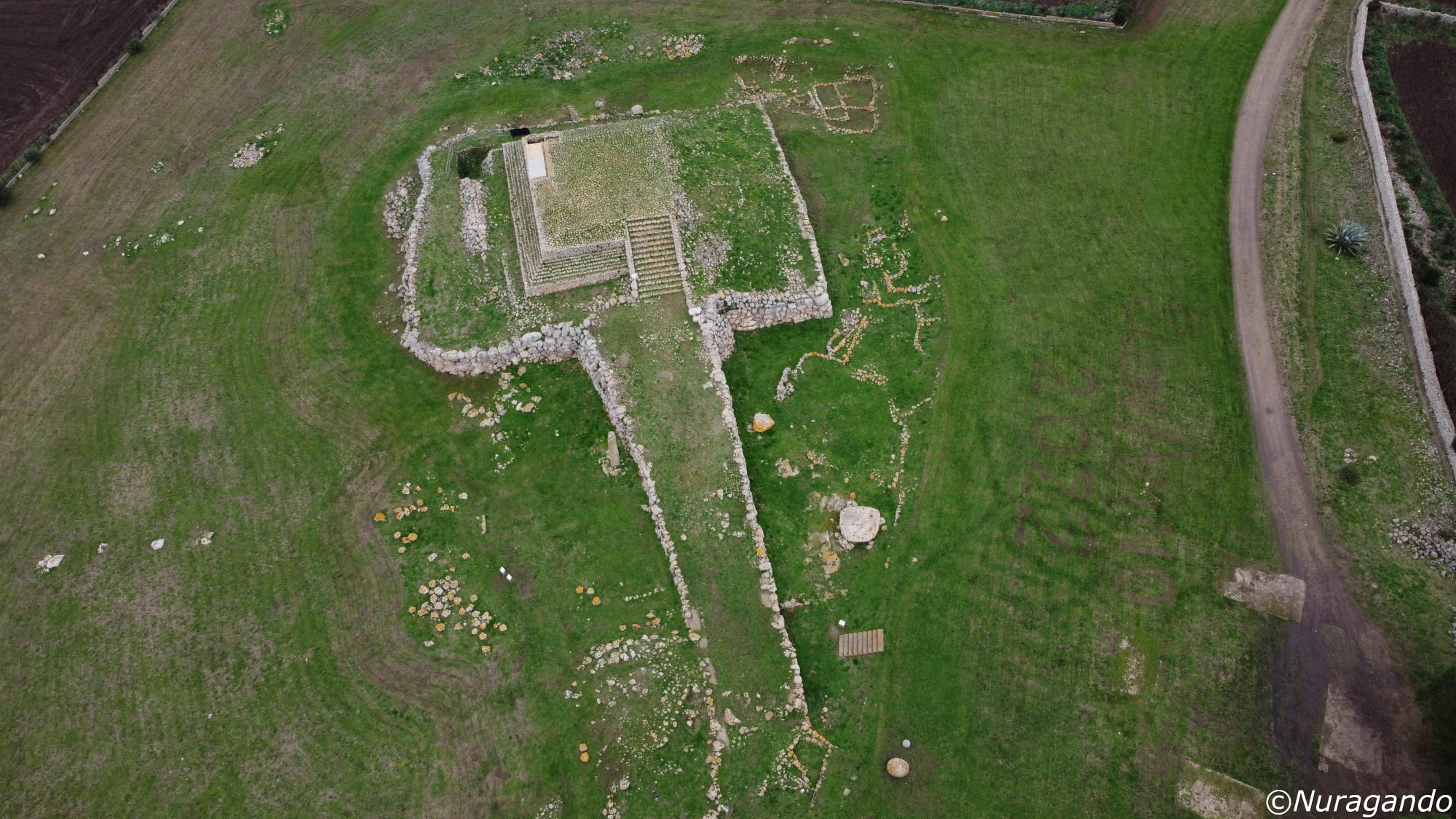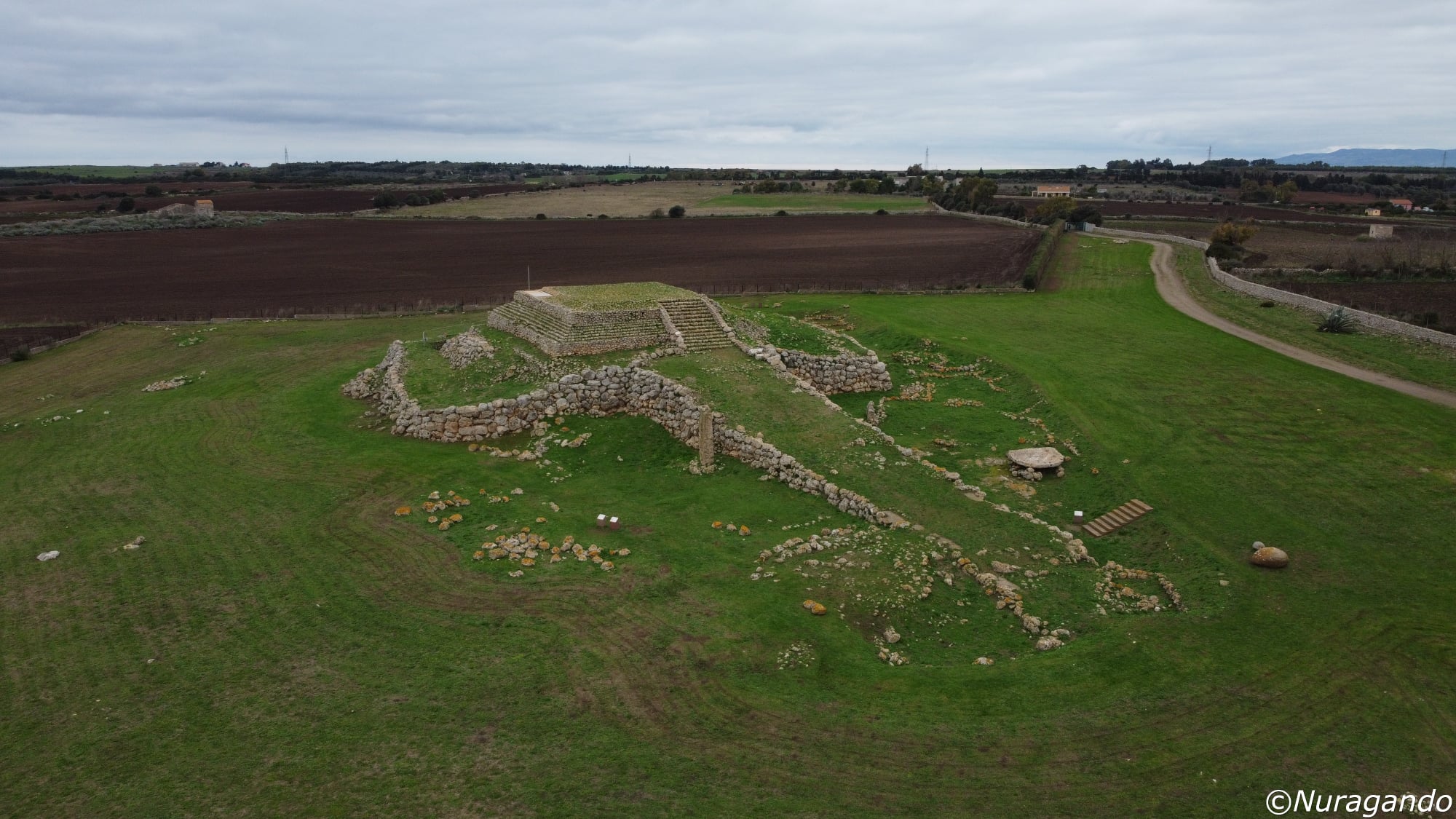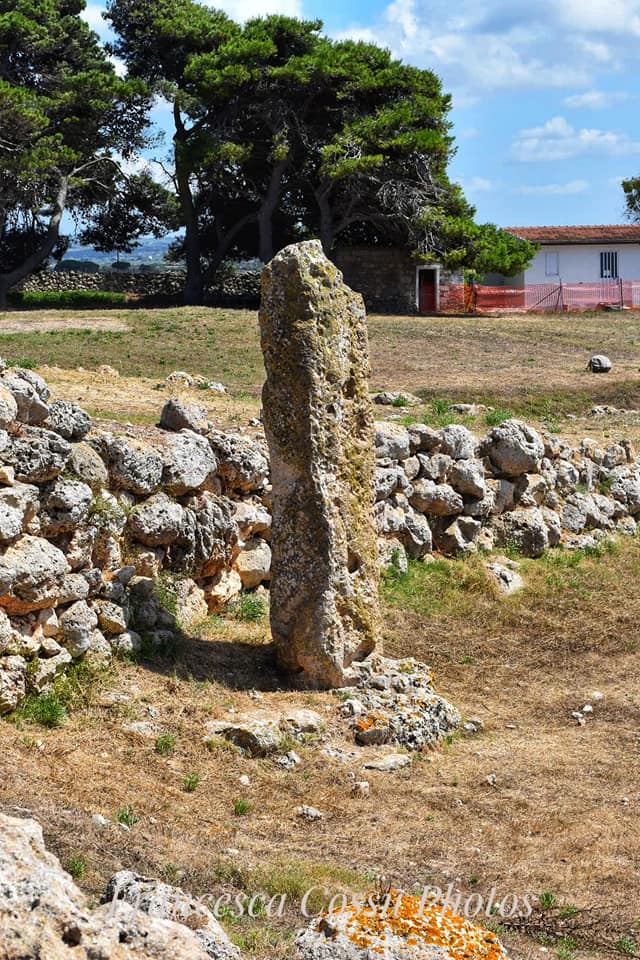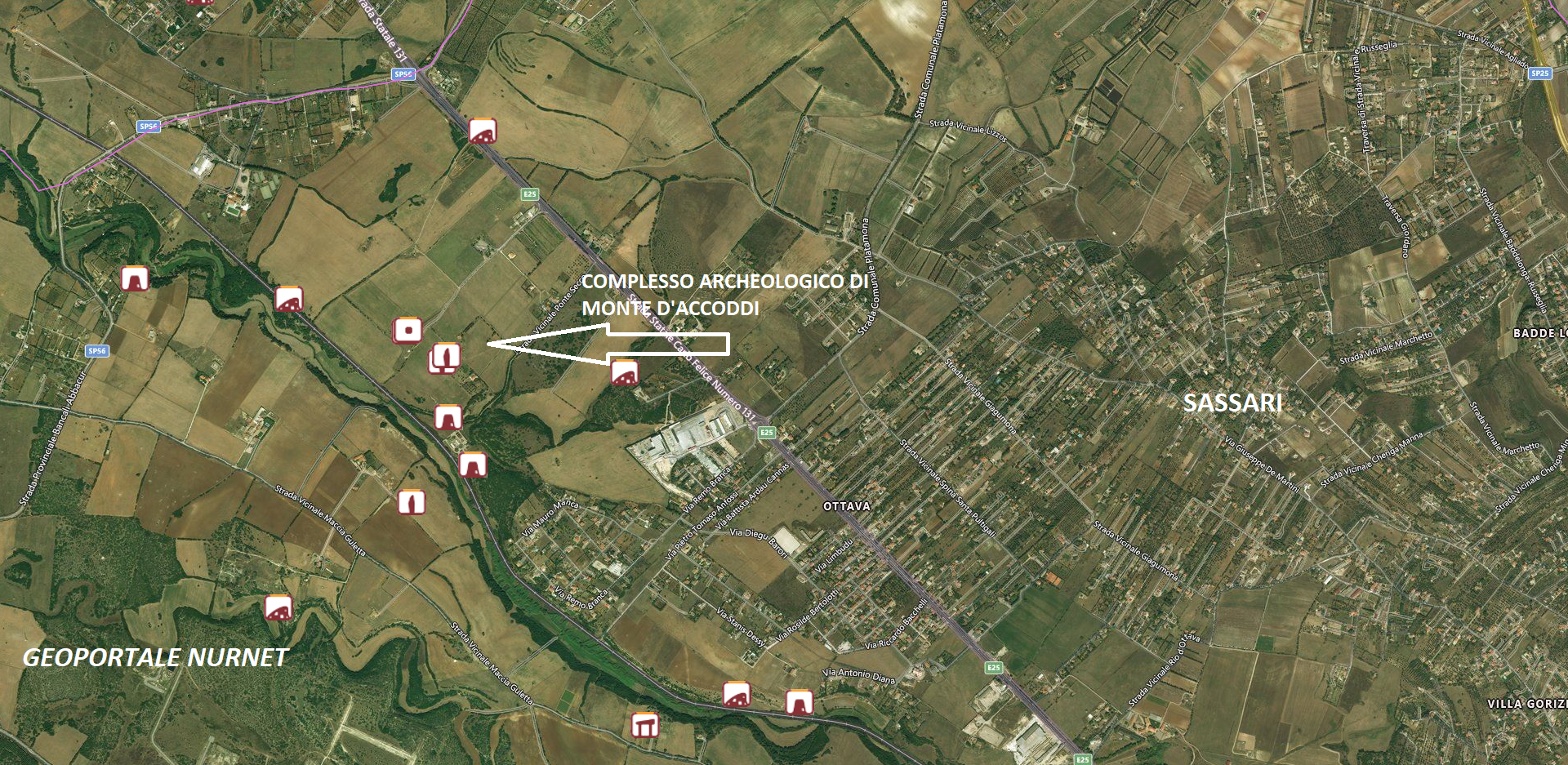8.2: The name of the archaeological complex of Monte d’Accoddi, in Sassari, likely derives from the Sardinian Logudorese and means “Mountain or hill of Stones,” referring to the aspect it had before the excavations, this small hill that for centuries hid the monument that rises in a fertile and flat territory, densely populated and exploited since Prehistory. Vast necropolises of domus de janas are present around this area so rich in archaeological evidence, as evidenced by the two menhirs placed in a field east of the altar, from which two spheroidal stones of probable sacred value originate, interpreted by some as astral symbolisms. The most immediate sensation one experiences at Monte d’Accoddi is surely linked to the sacredness of this place, where fertility propitiatory rites are documented in an archaeological context that has evoked amazement and interest since its discovery in 1952 following the excavations of Ercole Contu, later continued by Santo Tinè. Thanks to the work of archaeologists, it has been possible to reconstruct the different phases that characterized this site, starting from an initial village with oval-shaped huts attributed to the Middle Neolithic or Recent Neolithic and, in the phase referred to the Ozieri Culture (3200-2800 BC), a second village with quadrangular huts at the center of which a megalithic worship area was built with stone slabs for offerings and a menhir. Around 3000 BC, in the area previously occupied by the village, it was decided to build a first altar consisting of a quadrangular terrace called “Red Temple,” because its surface was plastered and painted with red ochre. A 25-meter long ramp allowed access to the summit where the cella was situated, a rectangular structure, of which remains of the floor and a part of the perimeter wall 70 centimeters high are preserved. Probably following a fire, around 2800 BC, a second stepped structure of larger dimensions was superimposed on the first altar, consisting of a truncated-pyramidal platform, covered with large limestone blocks. During the Abealzu Culture (2600 BC), an extensive village with rectangular huts was built around the altar, among which the Wizard’s Hut stands out, the only one with multiple rooms, so named because of the unique artifacts found during the excavation. The village-sanctuary became a religious reference during the Eneolithic, perhaps of supra-local significance, but, already during the Bronze Age, it was no longer recognized as a place of worship, as indicated by the discovery of a child burial dated to the Bonnanaro Culture (1800 BC). (Municipality of Sassari).
The photos of the archaeological complex of Monte d’Accoddi, in Sassari, are by Sergio Melis, Andrea Mura-Nuragando Sardegna, Nicola Castangia, and Francesca Cossu.










